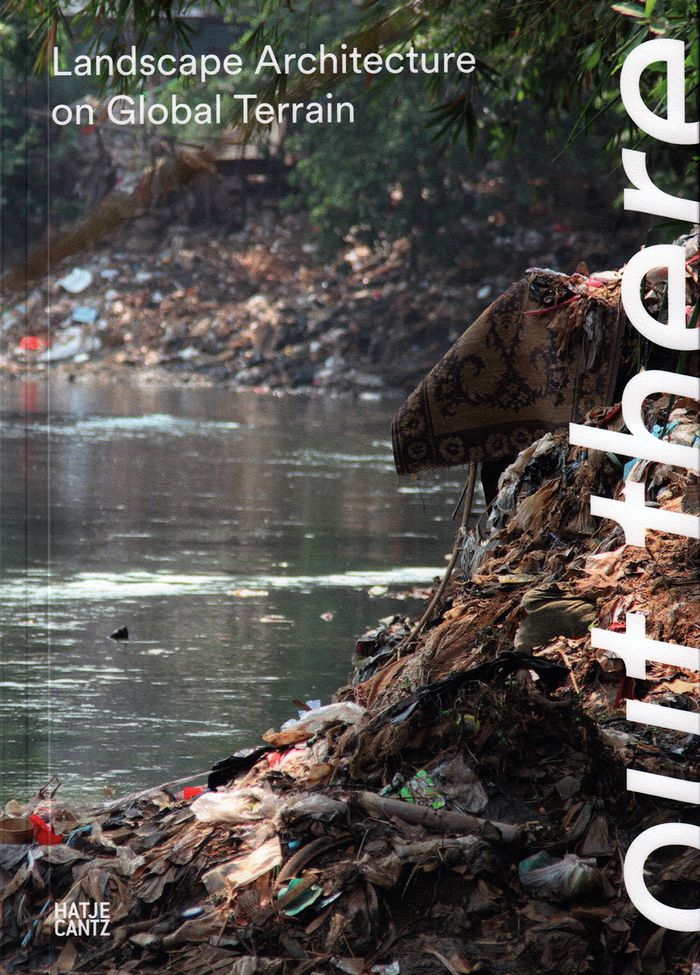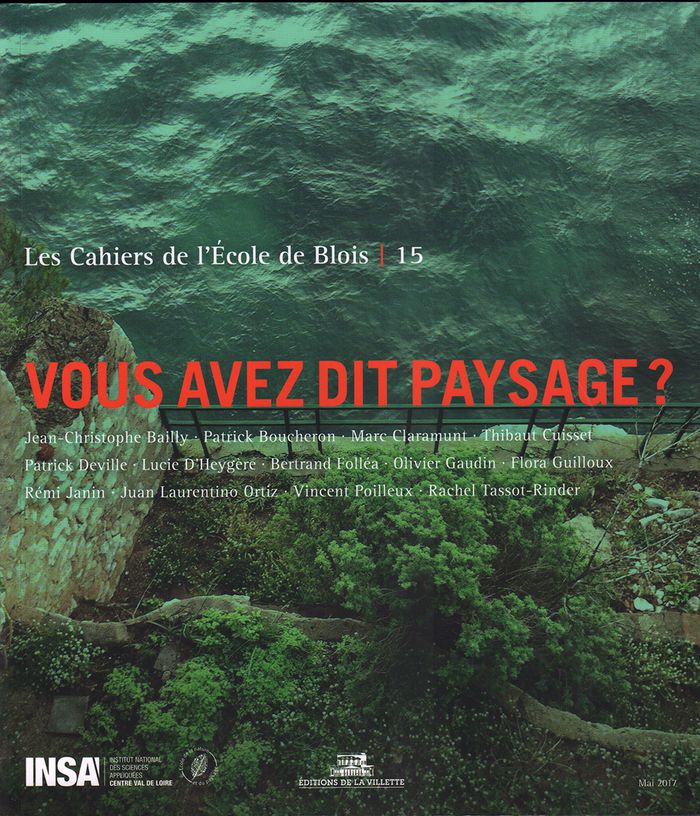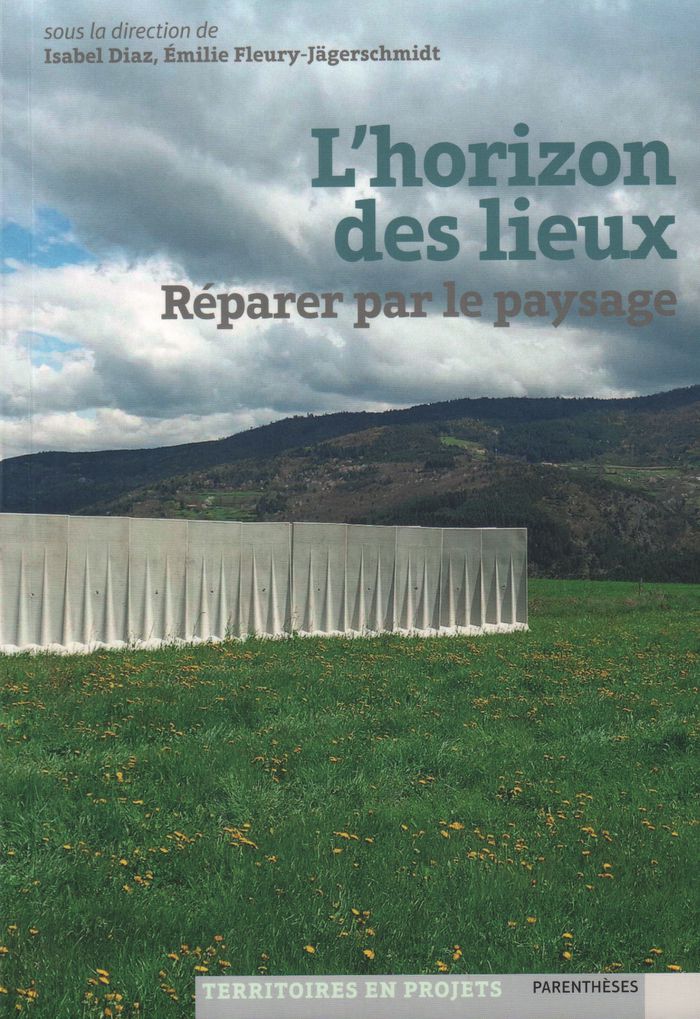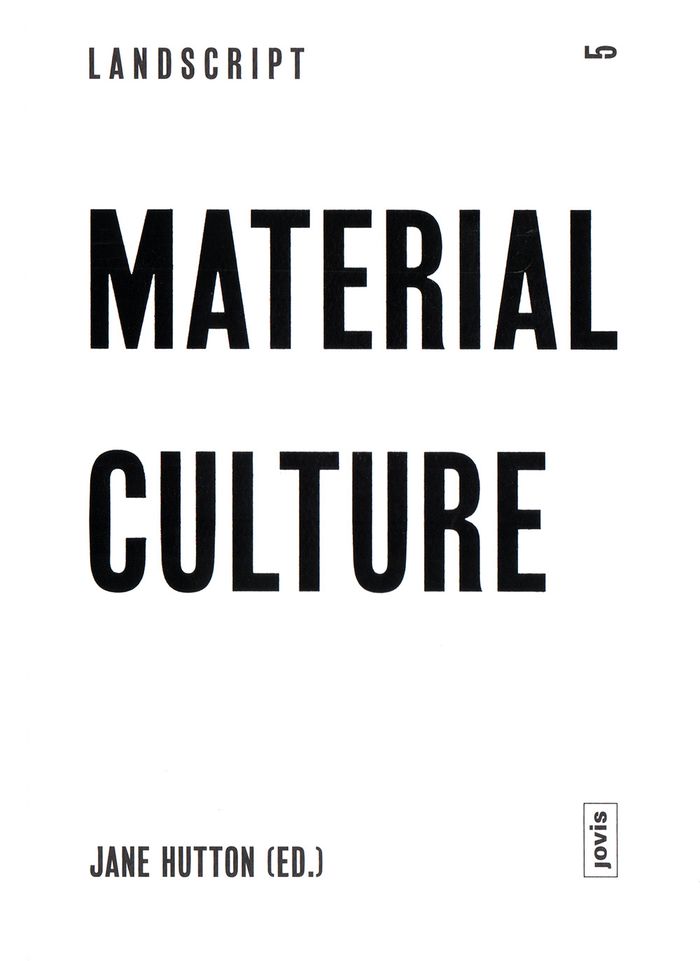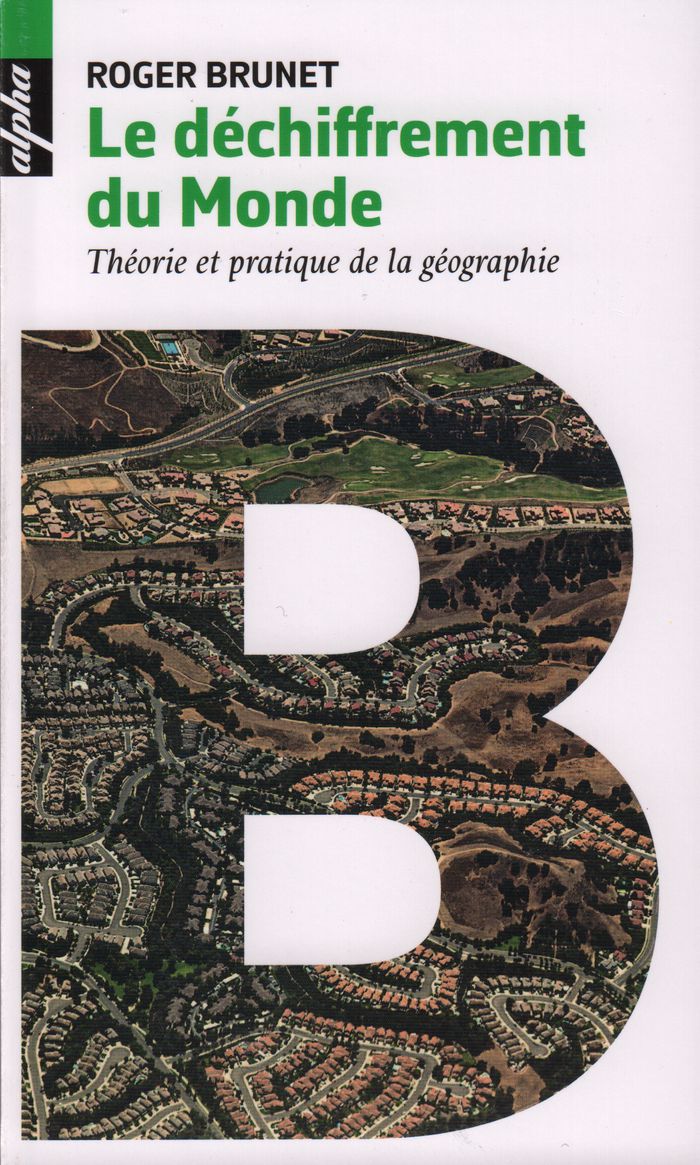Paysages et jardins divers
$29.50
(available to order)
Summary:
La rumeur des paysages vient jusqu’à nous; c’est le bruissement du vent dans les feuillages, le ressac des vagues sur la plage, le froissement imperceptible des nuages qui prennent forme lorsque nous les nommons, les décrivons et les imaginons. Plutôt que de chercher à dire ce qu’est un paysage, à le définir ou à en faire la théorie savante, ce livre propose d’en raconter(...)
Paysages et jardins divers
Actions:
Price:
$29.50
(available to order)
Summary:
La rumeur des paysages vient jusqu’à nous; c’est le bruissement du vent dans les feuillages, le ressac des vagues sur la plage, le froissement imperceptible des nuages qui prennent forme lorsque nous les nommons, les décrivons et les imaginons. Plutôt que de chercher à dire ce qu’est un paysage, à le définir ou à en faire la théorie savante, ce livre propose d’en raconter des histoires à partir des quelques pistes que savent nous faire découvrir les jardiniers et les paysagistes mais aussi tous ceux qui nous apprennent à mieux voir. Cette nouvelle édition comprend quatre nouveaux textes.
Landscape Theory
$57.50
(available to order)
Summary:
City and country are generally regarded as opposites. But today’s landscape architecture explores both of them as a single system, making it possible to see the mutual dependency of these supposedly opposing developments. In view of massive changes in ecological systems, as well as increasing migration and the spread of unplanned human settlements, landscape architecture(...)
Landscape Theory
July 2017
Out there: landscape architecture in the global terrain
Actions:
Price:
$57.50
(available to order)
Summary:
City and country are generally regarded as opposites. But today’s landscape architecture explores both of them as a single system, making it possible to see the mutual dependency of these supposedly opposing developments. In view of massive changes in ecological systems, as well as increasing migration and the spread of unplanned human settlements, landscape architecture is also being confronted with global challenges. "Out there: landscape architecture in the global terrain" is a plea to redefine the discipline’s position. Innovative but complex approaches are presented in examples of specific projects from all over the world. Landscape architecture today commits itself to the spatial systems that will shape tomorrow’s society.
Landscape Theory
$68.95
(available to order)
Summary:
Hong Kong’s border with Shenzhen is dissolving. By 2047, the border will likely not exist. Integration with the Mainland will remove distinctions created by the "One Country Two Systems" policy. The uncertainty surrounding what will happen has created anxiety relating to law, identity, freedom of speech, and voting rights. Caught in this debate is the Frontier Closed(...)
December 2016
Border ecologies: Hong Kong's mainland frontier
Actions:
Price:
$68.95
(available to order)
Summary:
Hong Kong’s border with Shenzhen is dissolving. By 2047, the border will likely not exist. Integration with the Mainland will remove distinctions created by the "One Country Two Systems" policy. The uncertainty surrounding what will happen has created anxiety relating to law, identity, freedom of speech, and voting rights. Caught in this debate is the Frontier Closed Area, a 1951 undeveloped buffer zone of estuaries, fish farms, forests, villages and military posts. In contrast, Shenzhen, has exploded into a metropolis of 15 million plus. The book explores this unique border ecology. Design strategies inserted within this ecology promote alternate forms of development. The example widens the discourse on borders to raise critical issues that impact the contemporary city.
The bench in the garden
$37.95
(available to order)
Summary:
The bench, an apparently small and almost irrelevant object, appears to function as a significant object in both through specific physical placement and in a more general sense- that of the blended domain of aesthetics, garden history, architecture, spatiality and subjectivity. The bench acts as a powerful visual machine, regulating the reception of a landscape in what it(...)
The bench in the garden
Actions:
Price:
$37.95
(available to order)
Summary:
The bench, an apparently small and almost irrelevant object, appears to function as a significant object in both through specific physical placement and in a more general sense- that of the blended domain of aesthetics, garden history, architecture, spatiality and subjectivity. The bench acts as a powerful visual machine, regulating the reception of a landscape in what it has to offer to its visitors. By transmitting verbal messages through inscriptions, citing other benches as part of a complex walk circuit, providing rest and inviting users to discover new aspects of the site, this highly polysemic element orients and disorients the visitor at the same time.
Landscape Theory
$35.95
(available to order)
Summary:
Limité un temps à un genre de la peinture, le paysage est aujourd'hui partout : via les questions d'urbanisme, d'environnement, de développement durable, il occupe l'espace de la plupart des problématiques engageant l'avenir. Géographie, histoire, moeurs, économie, agronomie, arts, littérature, voyages, philosophie, politique aussi bien sûr – tous ces champs, il les(...)
Les cahiers de l'École de Bois
Actions:
Price:
$35.95
(available to order)
Summary:
Limité un temps à un genre de la peinture, le paysage est aujourd'hui partout : via les questions d'urbanisme, d'environnement, de développement durable, il occupe l'espace de la plupart des problématiques engageant l'avenir. Géographie, histoire, moeurs, économie, agronomie, arts, littérature, voyages, philosophie, politique aussi bien sûr – tous ces champs, il les croise. Mais dans cette étendue il se perd quelque peu, et d'autant plus facilement que ni ses échelles (de l'infime à l'immense), ni ses modes d'interventions (des grands travaux au jardinage) ne sont fixés. Pourtant cette dispersion, gage de diversité, est le terreau où il se ressource. C'est cette multiplicité des approches que ce numéro explore et interroge.
Landscape Theory
Pagan's progress
$25.00
(available to order)
Summary:
In an age of ecological turbulence, our understanding of the hills, rivers and fields we live among is more critical than ever. But what might the academic study of geography fail to teach us, and what relationships to the land might be revealed by reinvestigating the neglected knowledge practices of myth, history and legend? Michael Dames sets out to reconnect with the(...)
Pagan's progress
Actions:
Price:
$25.00
(available to order)
Summary:
In an age of ecological turbulence, our understanding of the hills, rivers and fields we live among is more critical than ever. But what might the academic study of geography fail to teach us, and what relationships to the land might be revealed by reinvestigating the neglected knowledge practices of myth, history and legend? Michael Dames sets out to reconnect with the hallowed landscapes of Britain and Ireland, and finds them populated by ancient goddesses, strange rites, and embedded energies. As he voyages beneath the Neolithic immensity of Silbury Hill, past the chalk horses of Uffington, and the ravaged cliffs of Land’s End peninsular, Dames meets a wild community of holy cows, industrious bees, Sheila-na- Gigs, and Salmon women, channeling the peculiar folk tales they have to tell.
Landscape Theory
The long, long life of trees
$25.95
(available to order)
Summary:
Since the beginnings of history trees have served humankind in countless useful ways, but our relationship with trees has many dimensions beyond mere practicality. Trees are so entwined with human experience that diverse species have inspired their own stories, myths, songs, poems, paintings, and spiritual meanings. Some have achieved status as religious, cultural, or(...)
The long, long life of trees
Actions:
Price:
$25.95
(available to order)
Summary:
Since the beginnings of history trees have served humankind in countless useful ways, but our relationship with trees has many dimensions beyond mere practicality. Trees are so entwined with human experience that diverse species have inspired their own stories, myths, songs, poems, paintings, and spiritual meanings. Some have achieved status as religious, cultural, or national symbols. In this beautifully illustrated volume Fiona Stafford offers intimate, detailed explorations of seventeen common trees, from ash and apple to pine, oak, cypress, and willow. The author also pays homage to particular trees, such as the fabled Ankerwyke Yew, under which Henry VIII courted Anne Boleyn, and the spectacular cherry trees of Washington, D.C. Stafford discusses practical uses of wood past and present, tree diseases and environmental threats, and trees’ potential contributions toward slowing global climate change. Brimming with unusual topics and intriguing facts, this book celebrates trees and their long, long lives as our inspiring and beloved natural companions.
Landscape Theory
$41.95
(available to order)
Summary:
Le paysage peut-il réenchanter un site en désuétude, en attente d'un nouvel horizon ? C'est l'hypothèse de départ de la démarche "Atelier des territoires", à l'initiative du ministère en charge de l'urbanisme. Entre 2015 et 2017, cinq sites à reconquérir ont donc fait l'objet d'études de terrain dans ce sens : à Annonay, au sud d'Avignon, à Fort-de-France/Le Lamentin, à(...)
L'horizon des lieux : réparer par le paysage
Actions:
Price:
$41.95
(available to order)
Summary:
Le paysage peut-il réenchanter un site en désuétude, en attente d'un nouvel horizon ? C'est l'hypothèse de départ de la démarche "Atelier des territoires", à l'initiative du ministère en charge de l'urbanisme. Entre 2015 et 2017, cinq sites à reconquérir ont donc fait l'objet d'études de terrain dans ce sens : à Annonay, au sud d'Avignon, à Fort-de-France/Le Lamentin, à l'entrée nord de Perpignan et à Saint-Brieuc. Cinq équipes de paysagistes et architectes - Frédéric Bonnet (agence OBRAS), Bertrand Folléa et Claire Gautier (Folléa-Gautier), Cécile Beaudesson (Devillers et Associés), Sébastien Penfornis (Taktyk), Clément Bollinger et Simon Lacourt (Caudex) -, services de l'Etat et élus locaux discutent concrètement du destin de ces territoires variés, réinventent l'aménagement à travers le filtre du paysage et de ses unités visuelles et vécues, et font émerger des projets novateurs.
Landscape Theory
$53.95
(available to order)
Summary:
Volume five of the Landscript series examines material culture in the context of landscape architecture theory and design, positing the constructed landscape as a site for the investigation of human-nature relations and the factors that mediate their production, from labor to physical materials.
Landscript 5: material culture, assembling and disassembling landscapes
Actions:
Price:
$53.95
(available to order)
Summary:
Volume five of the Landscript series examines material culture in the context of landscape architecture theory and design, positing the constructed landscape as a site for the investigation of human-nature relations and the factors that mediate their production, from labor to physical materials.
Landscape Theory
$18.95
(available to order)
Summary:
Depuis qu'elle existe, l'humanité s'évertue à aménager le Monde, le réaménager, le diviser, le parcourir, le mettre en production et donc en valeur. Elle modifie sans cesse son habitat, produit tous les jours de l'espace, de la différence et de l'organisation - avec art et réussite souvent, mais non sans dégâts et perturbations dus à l'ignorance, aux erreurs, aux(...)
Le déchiffrement du monde : théorie et pratique de la géographie
Actions:
Price:
$18.95
(available to order)
Summary:
Depuis qu'elle existe, l'humanité s'évertue à aménager le Monde, le réaménager, le diviser, le parcourir, le mettre en production et donc en valeur. Elle modifie sans cesse son habitat, produit tous les jours de l'espace, de la différence et de l'organisation - avec art et réussite souvent, mais non sans dégâts et perturbations dus à l'ignorance, aux erreurs, aux conflits, à l'avidité. À partir de questions simples et fondamentales, "qu'y a-t-il là, pourquoi est-ce là comme ça, et où cela va-t-il ?", le géographe scrute et déchiffre les traces et les signes que livrent les paysages, la distribution des activités et des habitats, des cultures et des comportements, même les noms des lieux et les antimondes.
Landscape Theory

